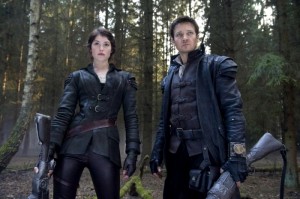Modern fairy tales are nothing new. They continue to be popular, and, as a fan myself, I anticipated Hansel and Gretel: Witch Hunters with both excitement and dread. Dread because these authorless tales have become huge franchises. I wonder if their underlying ideologies differ much from their origins and, if so, what that means for audiences.

As the title promises, Hansel and Gretel: Witch Hunters is a self-referential, ironic take on the original story. Here’s what the viewer gets (deep breath): CGI-injected scary witches, PG-13-erotic ‘good’ witches, an attractive Gretel fighting in a corset, an artistically compelling opening sequence, a diabetic Hansel, gore of the gooiest calibre, a slightly uncomfortable brother/sister dynamic, a troll slave with a heart of gold, and a welcome cameo by German actor Peter Stormare (The Big Lebowski). Phew! Oh, and it’s in 3-D.
There are some problematic elements in the film. Gretel gets punched in the face way too many times (and not by witches). She becomes unconscious at the mercy of male characters (twice!), and is groped during one of these naps. Heroines are allowed to be vulnerable, but giving her a big gun doesn’t save Gretel from being another girl in need of saving.
Also, this movie endorses the whole “beautiful equals good” thing, which goes back to Glenda’s statement from The Wizard of Oz that “only bad witches are ugly.” According to Hansel, witches can be detected by their rotting teeth and bad skin: it’s all rather retrogressive.
If you have a witch craving, watch Hocus Pocus, The Witches, Practical Magic, or The Witches of Eastwick instead. I can’t promise that some of the above elements aren’t present, but the plot and characters actually make up for them.
